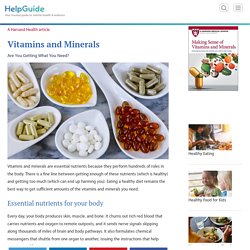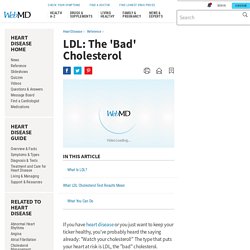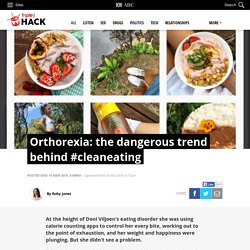

ACCC: Consumers. NSW Fair Trading: Buying products & services. Products Overview - AU. Australian dietary guidelines (page 23) Dietary Guidelines for Children and Adolescents. Food for Health: Dietary Guidelines for Children and Adolescents in Australia. Vitamins & minerals - Healthy Kids. Vitamin means ‘vital for life’.

Vitamins and minerals are compounds necessary for the healthy functioning of our bodies. We need vitamins and minerals to help us grow, to see correctly, to form bones, muscles, skin and organs, as well as to help us battle infections. Deficiencies in certain vitamins and minerals can lead to severe problems. The best way to ensure your child receives enough vitamins and minerals for healthy growth and development is to provide a wide variety of fresh foods from the five food groups including whole grain bread and cereals, vegetables, fruit, meat, fish, poultry, eggs, nuts and legumes, and dairy products such as milk, cheese and yoghurt.
Water soluble vitamins Fat soluble Vitamins Minerals.
Nutrition Australia. Food label poster. Nutrition information panels. Nutrition information panels (NIP) on food labels provide information on the average quantity of energy in kilojoules or in kilojoules and kilocalories and these nutrients: proteinfatsaturdated fatcarbohydratesugarssodium - a component of salt.

A NIP will include information about other nutrients if a claim is made. For example, if a food has a ‘good source of fibre’ claim then the amount of dietary fibre in the food must be shown in the NIP. The NIP must be presented in a standard format which shows the average quantity per serving and per 100 g, or 100 mL if a liquid. There are a few foods that don’t require a NIP, for example: foods sold unpackagedfoods made and packaged at the point of sale, such as bread made and sold in a bakeryherbs, spices, packaged water, tea and coffee because they have no significant nutritional value.
However, if a claim that requires nutrition information is made (for example, ‘good source of calcium’, ‘low fat’) a NIP must be provided. Serving size Protein Fat. Sugar quiz: How much sugar is in our food? 10 Questions remain.

How your digestive system works - Emma Bryce. The Immune System: Running as Preventative Medicine - Sports Science: Running. Vitamins & Minerals: Are You Getting What You Need? A Harvard Health article Are You Getting What You Need?

Vitamins and minerals are essential nutrients because they perform hundreds of roles in the body. Eat For Health. Healthy eating. Basic Nutrition and Macro - Nutrients Video Animation by Train With Kane. LDL Cholesterol: How It Affects Your Heart Disease Risk. If you have heart disease or you just want to keep your ticker healthy, you've probably heard the saying already: "Watch your cholesterol!

" The type that puts your heart at risk is LDL, the "bad" cholesterol. It collects in the walls of your blood vessels, where it can cause blockages. Higher levels of LDL raise your chances of a heart attack. That’s because of a sudden blood clot that forms there. Get a simple blood test to check your LDL levels. What Is LDL? Cholesterol isn't all bad. Some cholesterol comes from the food you eat, and your liver makes some. Children to be weighed and measured at school every two years in proposal to tackle obesity. Updated Children's height and weight would be measured every two years unless parents opt out as part of an ambitious proposal to tackle Australia's obesity epidemic.

The proposal, made by the Global Obesity Centre (GLOBE) at Deakin University to a Senate committee examining the issue, argues the data could map childhood obesity around Australia to better target where the problem is at its worse. The prevalence of overweight and obese young Australians aged 5 to 17 was 27 per cent in 2014/15, according to the Australian Health Survey. But GLOBE's Steven Allender said the rate of obesity was likely higher. "The information we have is really quite inaccurate," Professor Allender said. "We've got millions of children that are suffering from something that will affect the rest of their lives and we have no real understanding of the size of that problem. n55f children brochure.
Orthorexia: the dangerous trend behind #cleaneating - Hack - triple j. At the height of Doni Viljoen's eating disorder she was using calorie counting apps to control her every bite, working out to the point of exhaustion, and her weight and happiness were plunging.

But she didn't see a problem. "I thought I was the most healthy person in the world. I was, you know, going to the gym every day, restricting my food. I would walk with my chin held high, I thought it was amazing. " But her mum did spot the warning signs, and took 15-year-old Doni to four different GPs looking for help, without success. "They said 'it's all good, it's normal for teenagers to go through that'," said Doni. Doni was also trying not to get caught. "The eating disorder changed me. "Instead I would stay home to make my own food, count my own calories. Doni ended up in hospital on her 16th birthday, with a diagnosis of anorexia and excessive exercising.
Orthorexia, coined by US physician Dr Steven Bratman in 1996, is not currently a formal clinical diagnosis. UK sugar tax plan cheered by Australian health experts.